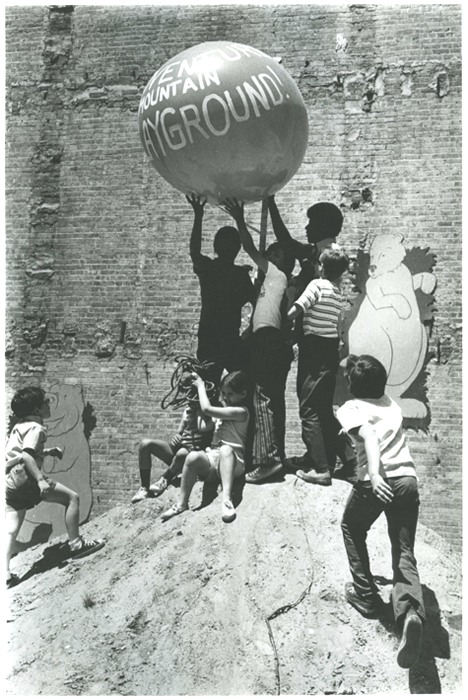Copyright © Diana Mara Henry / http://www.dianamarahenry.com
Diana Mara Henry is an American veteran photojournalist that began her career in the 1960s. I ran across her work while researching vintage playgrounds and reached out to her so I could get the deeper story behind a certain series of photographs she took in NYC of the Adventure Mountain Playground for the Lenox Hill Neighborhood Association in 1971. I was researching the social psychology of early playgrounds that brought different races, genders, and religions of children together to play and enjoy life and learning through movement. The 1971 images by Diana Mara Henry really captured the essence of an important part of the American playground and social history that needs to be highlighted again. History matters. Look back. Learn. Move forward.
“Probably should have begun long ago to share the stories behind the photographs for which I receive requests, with the often eloquent and fascinating voices of the folks who want to use them. I was so intrigued by Ron Jones’ genius in his field that I asked him to annotate these.”
-Diana Mara Henry, Photojournalist
DMH: “These are all from the photographs made for Lenox Hill Neighborhood Association in 1971; the playground was named Adventure Mountain Playground as shown here, in honor of the pile of sand.”
RJ: Some of the earliest American playgrounds were structured around a pile of sand. These early parks were called “sand gardens.” The first American sand garden playground was in Boston, MA in 1886. The original idea for sand gardens came from Berlin, Germany under the direction of Friedrich Froebel who was the founder of the kindergarten movement that used sand gardens so children could interact with natural organic materials. The technical name for playground hills like depicted in the above photograph as “hillock.” The hillcock was often covered in grass, but the basic premise was to allow children to frolicking about, rolling, experimenting with gravity, sliding, jumping, and coming up with other creative ways to play on their own. Some of our modern parks have small mounds of dirt covered with grass designed for child play—they are often the most popular areas of the parks too—even for some adults.
It’s just a pile of sand and dirt. NO batteries or smart phones required. 🙂
References:
- Diana Mara Henry Photography
- Diana Mara Henry Spotlight: “Children at Play Photo Collection”
- “Adventure Playground: Tire Rope” Diana Mara Henry Photograph Profile
- “Playground Uses Scrap Materials” (New York Times, OCT 10, 1971)
- “Sand Gardens” (Play Encyclopedia)
- “Playadise Lost: Restoring Playgrounds & Building Your Own” (Ron Jones)
–Ron Jones, MS, Historical Kinesiologist, Physical & Health Educator
